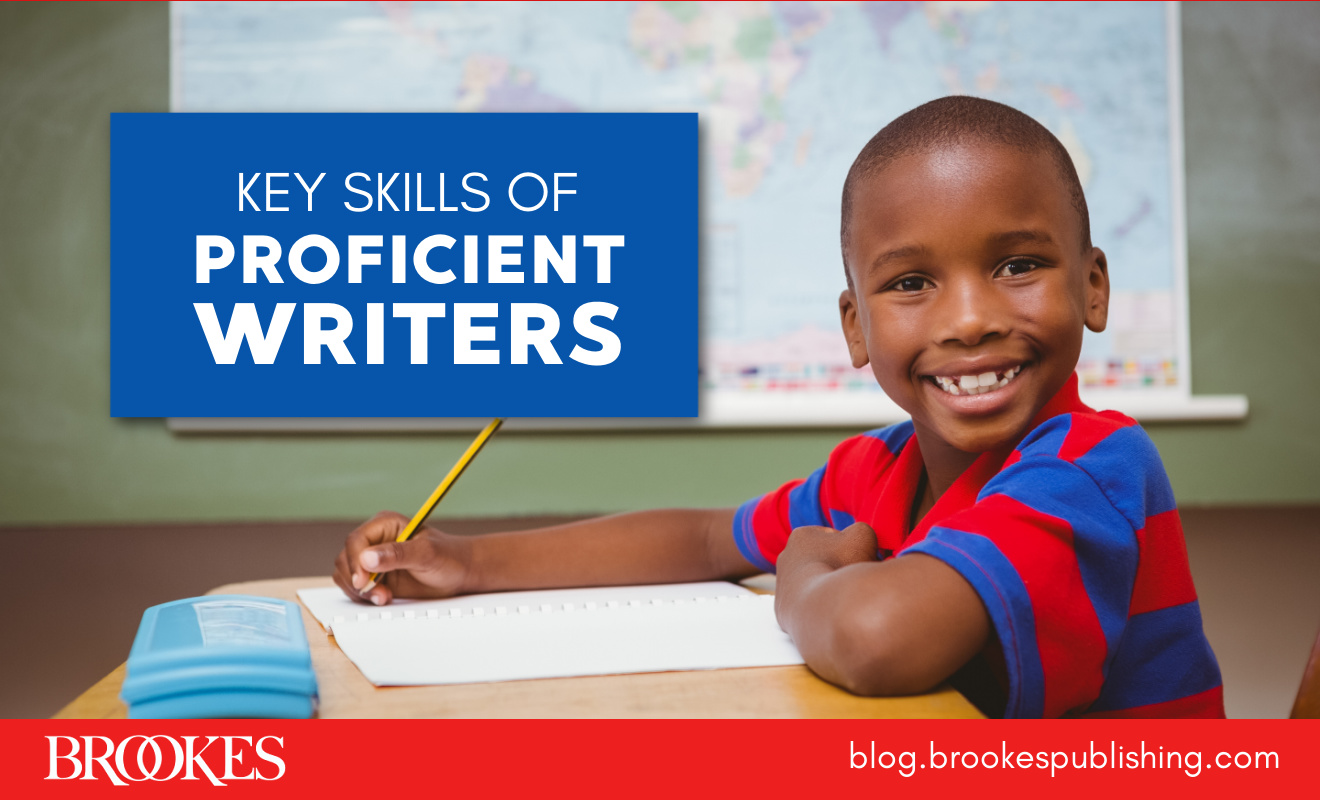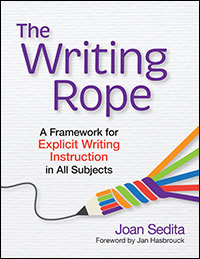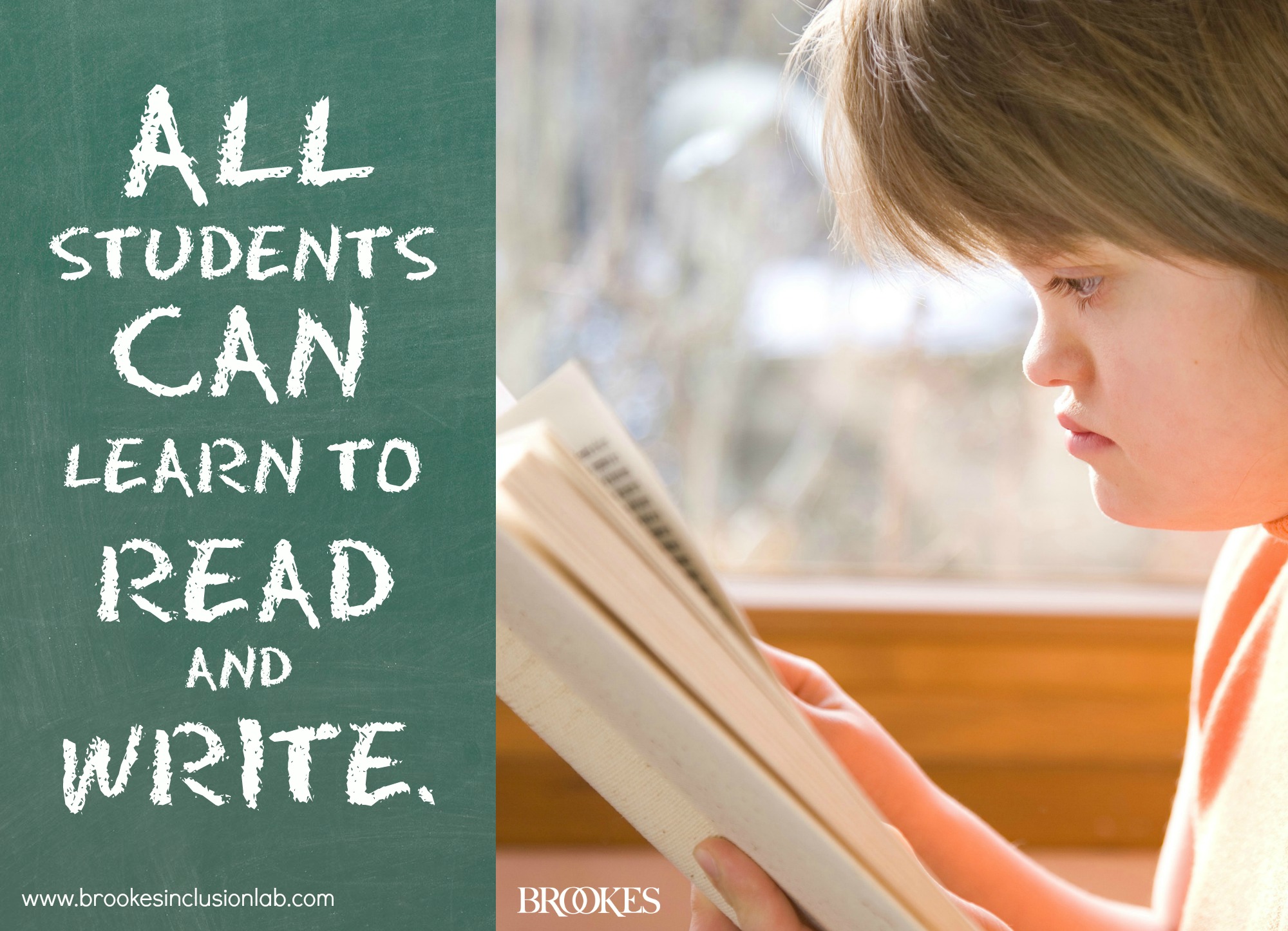5 Things Proficient Writers Do
September 8, 2022
 Writing is a complex skill—and to become good writers, students need to integrate skills and strategies from all the components of what author Joan Sedita calls The Writing Rope. Using a metaphor similar to Scarborough’s Reading Rope, The Writing Rope uses strands of a rope to represent five components that contribute to fluent, skilled writing. In today’s post, excerpted and adapted from Sedita’s book, we’ll take a brief look at all five strands of The Writing Rope, examine what they encompass, and list resources you can find in the book to help students master each element.
Writing is a complex skill—and to become good writers, students need to integrate skills and strategies from all the components of what author Joan Sedita calls The Writing Rope. Using a metaphor similar to Scarborough’s Reading Rope, The Writing Rope uses strands of a rope to represent five components that contribute to fluent, skilled writing. In today’s post, excerpted and adapted from Sedita’s book, we’ll take a brief look at all five strands of The Writing Rope, examine what they encompass, and list resources you can find in the book to help students master each element.
Proficient writers continually use critical thinking skills throughout the whole writing process. This includes:
- Thinking: Identifying audience and purpose, brainstorming the topic, gathering information, and taking good notes
- Planning: Organizing ideas, using a planning guide
- Writing: Following the planning guide, translating ideas into sentences and paragraphs
- Revising: Reviewing the content, proofreading for conventions, and rewriting
Proficient writers repeat and revisit all these stages in the writing process as they develop a piece of writing. Students benefit from reminders that further thinking, planning, and editing usually leads to improvement of a writing piece.
Refer to The Writing Rope for: Suggestions for explicit instruction of strategies at each stage, including two-column notes for the Think and Plan stages, a topic web for the Plan stage, writing templates for the Write stage, and content revision and proofreading suggestions for the Revise stage.
Proficient writers use knowledge of syntax to write sophisticated, high-quality sentences. The ability to write sentences is an essential building block of writing. Students benefit from instruction and practice activities that develop their syntactic awareness—that is, familiarity with the system and arrangement of words, phrases, and clauses that make up a sentence. Teachers should give students instruction on the basic sentence elements and structures:
- Subjects and predicates, including compound subjects and compound predicates
- Independent and subordinate clauses
- Four types of sentence structures: simple, compound, complex, and compound-complex
Refer to The Writing Rope for: Suggestions for teaching sentence basics, plus instructional activities—including sentence scrambles, sentence combining, and sentence elaboration—that can help students develop syntactic awareness and sentence-writing skills.
Proficient writers apply knowledge of text structure, including both paragraph and longer text structure.
Many students enter middle and high school with an insufficient understanding about paragraphs, paragraph writing skills, and patterns of organization in writing. Students benefit from explicit teaching about the three types of sentences in a paragraph: A topic sentence, supporting sentences that provide details related to the main idea, and a concluding sentence. They also need instruction on the different patterns of organization in narrative and informational texts, sometimes referred to as text structures. They should learn how to identify and apply the patterns of organization writers commonly use, including description, explanation, sequence, cause and effect, compare and contrast, and problem and solution.
Refer to The Writing Rope for: instruction and practice activities that develop students’ awareness of paragraph structure; writing templates that are designed around six patterns of organization.
Proficient writers practice writing craft and incorporate “writer’s moves.” Good writing also requires what is sometimes referred to as the art of writing, where the writer uses certain techniques and devices related to the use of language to create an effect on the reader. These techniques are called writer’s craft, or writer’s moves.
Students should be taught that awareness of the task, audience, and purpose (TAP) for a writing piece should affect their choices about the language and words they use, the type of information and level of detail to include, and how to arrange and present information. Students also benefit from instruction around the elements of writing craft, including the writer’s voice, tone or sound of writing, word choice (including figurative language), use of dialogue, and use of literary devices. These techniques are typically applied to narrative writing, but some of them can be used in expository writing, too.
Refer to The Writing Rope for: Anchor charts to track examples of writer’s craft techniques in texts, a handout to help students think about TAP before they write, charts and teaching aids for instruction about elements of writing craft.
Proficient writers use transcription skills continually. Spelling and handwriting/keyboarding are skills that students need to transcribe their words. These skills underpin proficient writing and should be taught in the early grades. If students don’t become automatic and fluent with transcription skills by Grade 4, this will put a constraint on their writing development as they move into later grades.
Students benefit from:
- developing phonemic awareness and learning phonics concepts in the early grades
- developing morphological awareness of words and word parts (roots, affixes) as units of meaning
- mastering how to read and spell multisyllable words through advanced word study instruction
- learning how to how to grip a pencil for optimal control
- practicing letter formation, ideally in brief, frequent sessions
- developing both handwriting and keyboarding skills
- improving the legibility of their writing
Refer to The Writing Rope for: Instructional suggestions for teaching spelling and handwriting, with an emphasis on providing this instruction during the primary grades.
Aligned with IDA’s Structured Literacy approach and based on the latest research, the book behind today’s blog post can help you teach all five components of The Writing Rope—and help all students master a critically important aspect of literacy.
The Writing Rope
A Framework for Explicit Writing Instruction in All Subjects
By Joan Sedita, M.Ed.
Perfect for professional development, this invaluable planning guide weaves multiple skills and strategies into five fundamentals of a comprehensive writing curriculum. Teachers of Grades 4–8 will get crystal-clear guidelines that demystify the process of helping students learn to write and write to learn across academic content areas. And with dozens of templates, handouts, and other resources—available for download online—teachers will have the tools they need to design and deliver explicit, high-quality writing instruction.




Write a Comment
Your email address will not be published. Required fields are marked *
Post a Comment